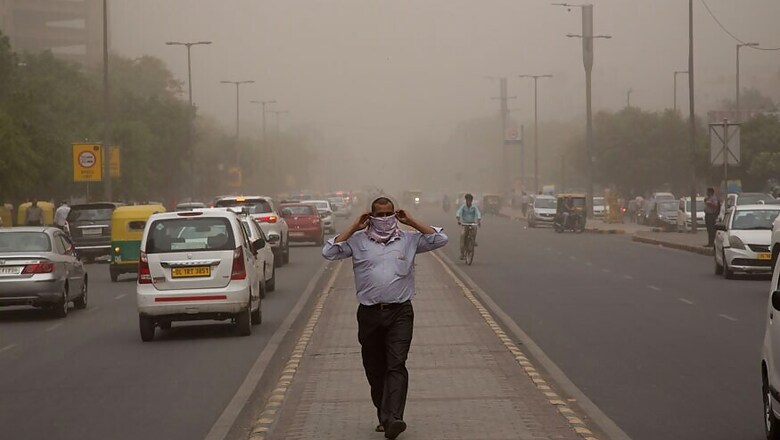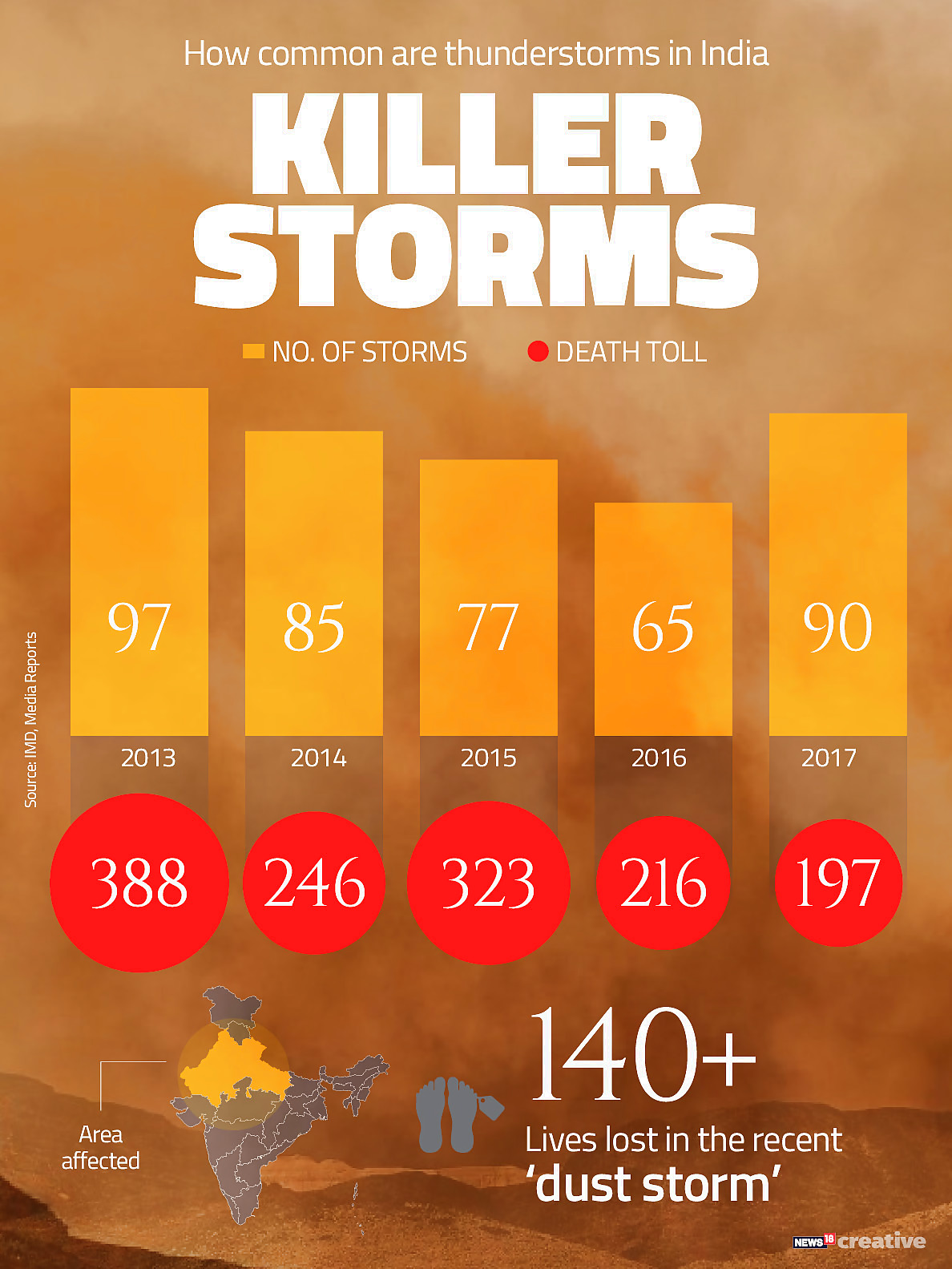
views
New Delhi: The MeT department has issued an amber-coloured alert, reserved for severe weather, in Delhi, Chandigarh, Uttarakhand, Himachal Pradesh, Jammu and Kashmir, Haryana, Western Uttar Pradesh, Sikkim and West Bengal.
The Delhi government has reacted to this and has put search-and-rescue teams on standby, warnings have been issued by the traffic police too.
At least 124 people were killed and more than 300 injured majorly in Western UP and Rajasthan last week due to dust storms, thunderstorms and lightning. Experts have, however, said that the phenomenon of a thunderstorm was not unprecedented.
Saurabh Bhardwaj, a fellow at TERI, said that a look at casualties shows that the deaths were mostly restricted to the eastern side. “We need to see whether there was a lapse on the part of administration. State governments are now definitely on their toes but an inquiry must be made as to why hundreds have died,” he said, adding that thunderstorms were a natural occurrence that happened every year, more so because of western disturbances.

AK Mitra, senior scientist at the IMD, said that the essential factor for development of thunderstorms included ascent of large quantities of warm air, lifting forces and surface heating. “This occurrence comes every year because of western disturbances during pre-monsoon season. It has been found that northern, eastern and southern part of the peninsula is prone to it,” he said.
Bhardwaj further said that there were no attribution studies that have been done on climate change and thunderstorms. “But the need of the hour is for states to incorporate a system of extreme weather information, like how Ahmedabad has a heat action plan,” he said.
Meanwhile, spokesperson on the World Meteorological Organization (WMO) Clare Nullis, has termed the storm as exceptional. “Storms are common in the pre-monsoon season in India. But the severity and the impact of this particular storm is exceptional. I’ve spoken to a number of colleagues this morning at WMO and they say they’ve never heard of anything like it,” she said, reported Associated Press.
“Two meteorological stations in Pakistan, just over the border, reported temperatures of at least 50° Celsius on 30 April. This is April, not June or July, we don’t normally see such temperatures,” she added.
The Delhi-NCR region was hit by a dust storm with a wind speeds of 70 km per hour late on Monday, followed by a squall. The high-velocity wind swept through Delhi around 11:15 pm, PTI quoted an official at the Safdarjung observatory as saying. The MeT department has forecast rains and gusty winds in Delhi on Tuesday as well. Monday night’s showers brought down the temperature in Delhi, which had recorded a maximum temperature of 39.6 degree Celsius during the day.




















Comments
0 comment